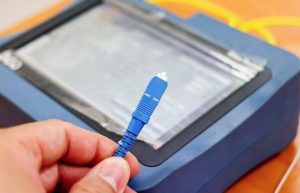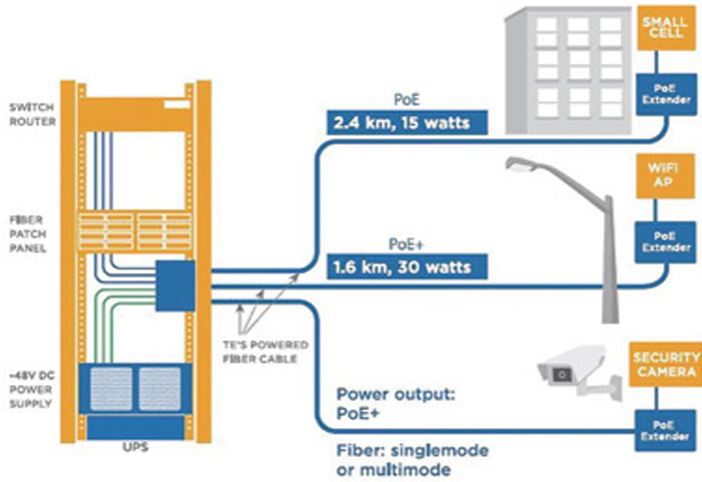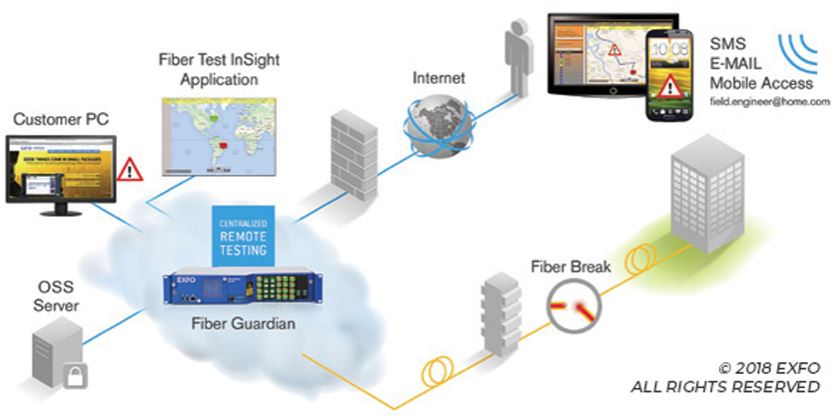
Most of the applications for the Internet of Things (IoT) are still in the incubation stage. Whether we want to solve challenges in modern medicine, make our cities easier to navigate, or increase the efficiency of our farmers, there’s still a long road ahead.
As network operators and those involved in the trade, the onus is on us to think about the latest products and tools that not only enable the technologies of the future, but also allow us to protect the vital infrastructure in ways we haven’t before.
There are three technologies I suggest network operators in the private and public sectors consider implementing to aid with damage prevention:
- Line Power to Remote Monitoring Devices
- Fiber Optic Acoustic Detection
- Remote Fiber Test Systems
None of these technologies are new, but recent developments further increase the value for service providers. Cloud-based visibility is one trait these systems have in common that truly allows for measurable reductions in operating expenses – the holy grail of cost-cutting.
Line Power for Monitoring
Until recently, delivering power and communications to a device more than 300 meters from the switch was a complicated and costly endeavor. Locating a device on someone’s property, such as a wireless access point or camera, usually meant you were trying to negotiate using power from their building or requesting a meter dropped from the utility nearby.
A new, powered fiber cable design featuring a pair of conductors flanking strands of fiber was developed in tandem with a system solution that is inexpensive and easy to deploy. This system uses Class II SELV power supplies that do not require a certified electrician to install. The compact cable design requires only one tool to strip and access the conductors and fiber. The powered fiber hybrid cable can be supported by traditional telephone “P-Clamps” or installed in a microduct pathway for reduced installation costs.
The power system is capable of balancing power between multiple devices that require different wattages. The distances you can reach with the system vary by the size of the conductor and the power required at the device, but it is possible to reach up to 3km from the power supply while  delivering 15 watts of power. This would accommodate a typical WiFi access point.
delivering 15 watts of power. This would accommodate a typical WiFi access point.
While airports, industrial sites, and campus environments already make use of the powered fiber solution, it could also be used by service providers to monitor critical facilities. Camera systems could be deployed using powered fiber around perimeters of secure data centers, earth stations or colocation facilities. Additional devices such as site access controllers or smart lighting could be run off the same shelf at distances beyond the current capabilities of PoE. All of the aforementioned devices are available to be accessed from the cloud, which could allow for reduced staffing requirements or truck rolls at those facilities.
Fiber Optic Acoustic Detection
A remarkable technology, Fiber Optic Acoustic Detection (FOAD) uses algorithms to decipher sound vibrations impacting a single optical fiber strand. The system is able to detect these sounds based on the backscatter of light pulses the vibrations create. This technology is capable of interpreting sounds created by someone walking by, passing trains or vehicles, gun shots, and more. Developers are constantly analyzing the backscatter modulations to further increase the system’s ability to interpret sounds.

FOAD systems detect sounds that are three meters from the fiber being monitored. The conditions of the cable as well as the type of pathway are two key factors that impact the ability of the system to operate optimally. Believe it or not, older optical fiber and cable designs are typically preferred, which makes using degraded fiber more attractive. These fibers may have been previously removed from service due to their degradation that limits their ability to support current capacity and data rates.
While the government and railroads are early adopters of this technology, network operators can certainly use it for their own security and analysis. Imagine that a backhoe pierces the soil near your cable, and your records don’t show a completed dig ticket for that location. The system might generate an alarm to notify your OSP manager via text message to further investigate the situation. Even if you can’t prevent the potential damage done to the cable, the ability to pinpoint the location practically eliminates the meantime-to understand (MTTU) a break in the fiber.
 Remote Fiber Test Systems
Remote Fiber Test Systems
Shelf-mounted OTDRs are already a staple in central offices, but they typically don’t offer visibility to the outside plant (OSP) staff that enable them to resolve events as quickly as they would like. Information derived from these systems is often incomplete, and they require excellent records to understand exactly where a break might occur based on the OTDR trace. Fiber versus cabled length, slack loops, and risers are just a few reasons why OTDR traces might not pinpoint the exact geographical location of the event.
There is a Remote Fiber Test System (RFTS) today that supports integration with multiple GIS and reporting software that is 100% web-based. Alerts can be generated by the system to immediately notify the appropriate parties that there is an issue. These notifications may be transmitted via text message (SMS), email, or SNMP notifications. Furthermore, if the RFTS system is integrated into a GIS or if it uses its own mapping tool, the GIS tool can give and display accurate geographical locations based on GIS documentation. The software logging the events can prioritize by severity (i.e. macrobends versus a break) allowing technicians and their managers greater efficiency in repairing the network.
These systems can run as standalone units or combined to monitor multiple fiber routes to get a complete view of the network operations. The ability to build-as-you-grow allows for flexibility in capital expenditures with options to layer advanced software suites with in-depth analytics to better suit a wide range of budgets and reporting requirements.
The predictions for connected devices in the IoT realm range from extraordinary to unbelievable. If the invention of the smartphone was any indication, who would have predicted the number of applications that would develop for any conceivable purpose? With these three connected technologies, you could gain invaluable insight into the network for security, damage prevention, and efficiency. Network operators are already in the driver’s seat for the Internet of Things… the time has come to take advantage of it.

